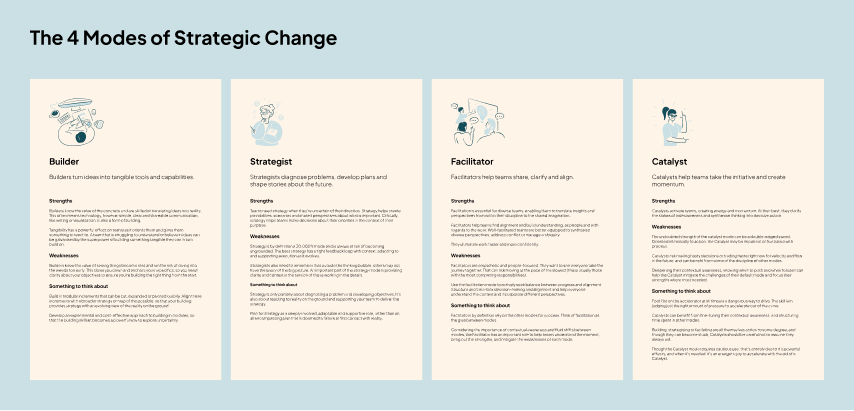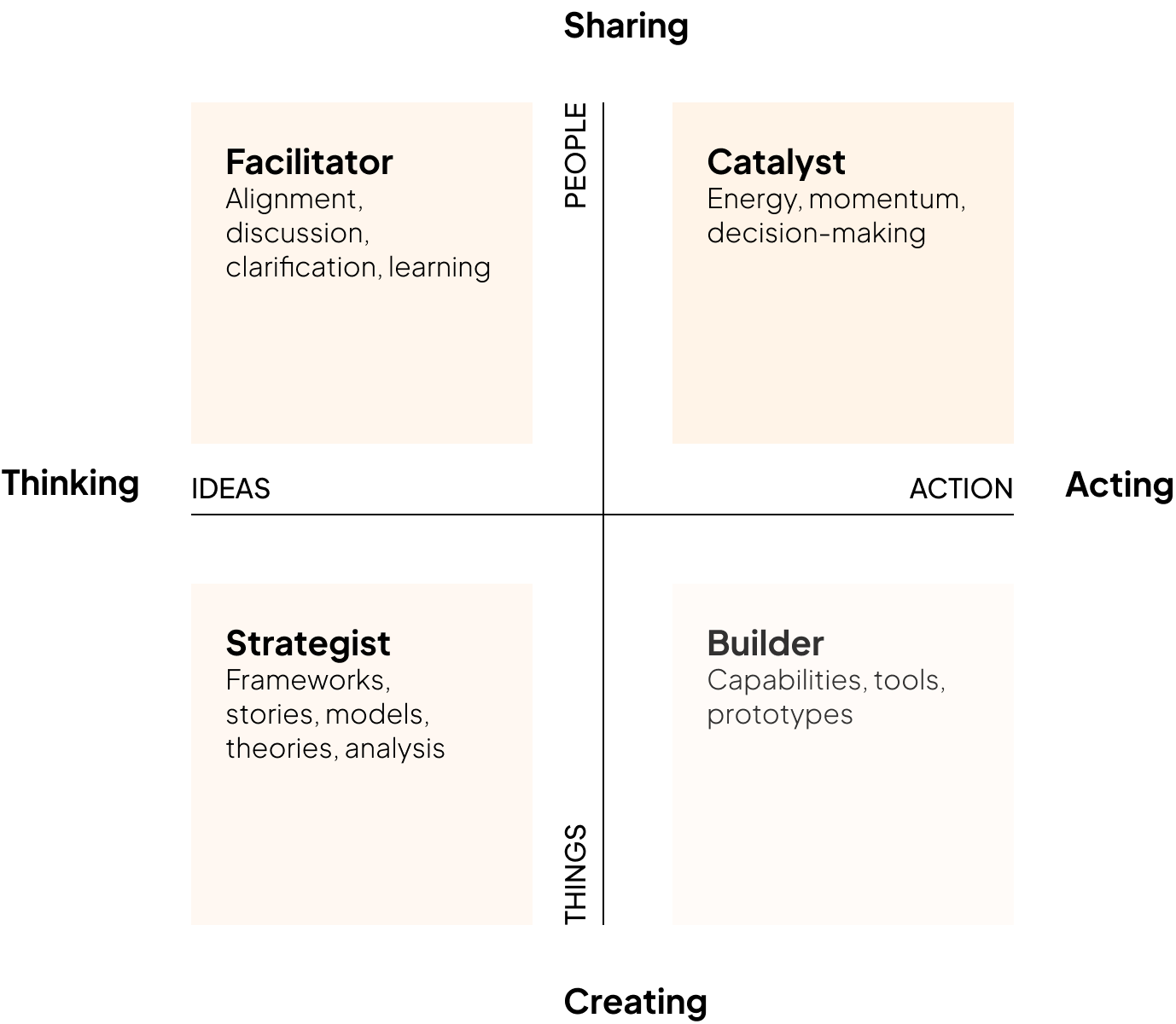The 4 Modes of Strategic Change - which is your default?
Adapting to the situation at hand is a long-standing human trait. We believe there's a clue in this adaptability for teams playing a long game of strategic change.

Adapting to the situation at hand is a long-standing human trait. David Graeber and David Wengrow's Dawn of Everything recently reminded us of the surprising fluidity of Inuit social dynamics, with entirely different cultural norms in summer and winter. Strongly hierarchical organisation took precedence during hunting periods and more relaxed norms prevailed at others. We believe there's a clue in this adaptability for teams playing a long game of strategic change.
An obvious advantage of fluidity is the ability to apply the most appropriate experiences and skills to the problem at hand. As this Scientific American article points out, diversity of experience both broadens the variety of perspectives teams are able to draw on, and challenges them to more deeply integrate those perspectives. Those benefits are likely to apply to diversity of skills as well.
Cautiously inspired by the anthropological examples of the flexible social dynamics mentioned previously, as well as ideas from psychology, Buddhism and philosophy about the fluid and multiple nature of the self, we've developed a model that identifies some of the common "modes" of working on strategic changes.
Our thesis is that each of these modes is an appropriate response to a specific context, and the ability to understand what is needed in a specific situation, and fluently switch between modes is a formidable strength of a confident team.
We think that teams should maintain a conversation, outside of their day-to-day work, focused on noticing the context they're working in and consider the best mode to help them in that moment. This context should include the flow, velocity and direction of the work, as Melissa Rosenthal has discussed in a series of recent articles.
Our model identifies 4 "modes" or approaches to strategic work: Builder; Strategist; Facilitator and Catalyst.
- The Builder turns the intangible into the concrete
- The Strategist diagnoses and shapes a theory of change
- The Facilitator brings everyone together with shared understanding
- The Catalyst creates energy and momentum

None of these modes are linked to job titles, hierarchy or disciplines and they don't replace traditional organisational structures. You may be a designer working on "building" a strategic story, or a developer facilitating a decisions about a new platform.
Instead of focusing on roles, this model simply says that at any given moment there is a greater need for momentum, alignment, vision or tangibility, and the team should be able to quickly diagnose and pivot towards that need, following the lead of whoever is best positioned to address it.
If we consider these dimensions as fluid modes, rather than fixed characteristics, then bringing our own biases or defaults (such as an action bias) to the surface can improve our ability to swap the mode we're most used to for the one that's most needed.
As an example of how this might work: imagine a team that needs to make a decision about where to invest their efforts over the next quarter. An action-biased team might default to making a quick decision and prioritising progress, but get caught in the weeds over something more challenging than they'd anticipated. On the other hand, a thinking-biased team might get stalled in over-analysis and lose momentum.
Neither of these approaches are inherently wrong. They are victims of their approach falling out of alignment with the needs of their situation, and being too slow to recognise it and adapt. Armed with better knowledge of their underlying defaults, and practiced in switching between all modes of strategic change, the team can hot-swap as needed to improve momentum, alignment, vision or tangibility.
This thinking has been shaped by many years of experience in large, diverse transformation teams such as Westpac in Australia or GOV.UK in the United Kingdom. There is some alignment with the work of Andy Wu, Goran Calic, and Min Basadur, though we believe liberating the framework from the confines of fixed types and emphasising fluidity of strategic modes and contextual awareness is important. The model will no doubt evolve with use and feedback.
I'd like to thank Kris White, Erich Domingo and Anna Terenziani for their feedback, discussions and contributions to the development of these ideas.
We'll be using this model going forward to help the teams we work with build better awareness of their default modes, improve their conversations about what's needed and hopefully nurture some of the under-appreciated aspects hidden within each of us.
To make thinking about Strategic Modes simpler, and a bit more fun, we've built a simple tool you can use to discover your own default mode. Give it a try and if you like what you've learnt, subscribe to The Long Game, our newsletter on insight, design and strategy.

